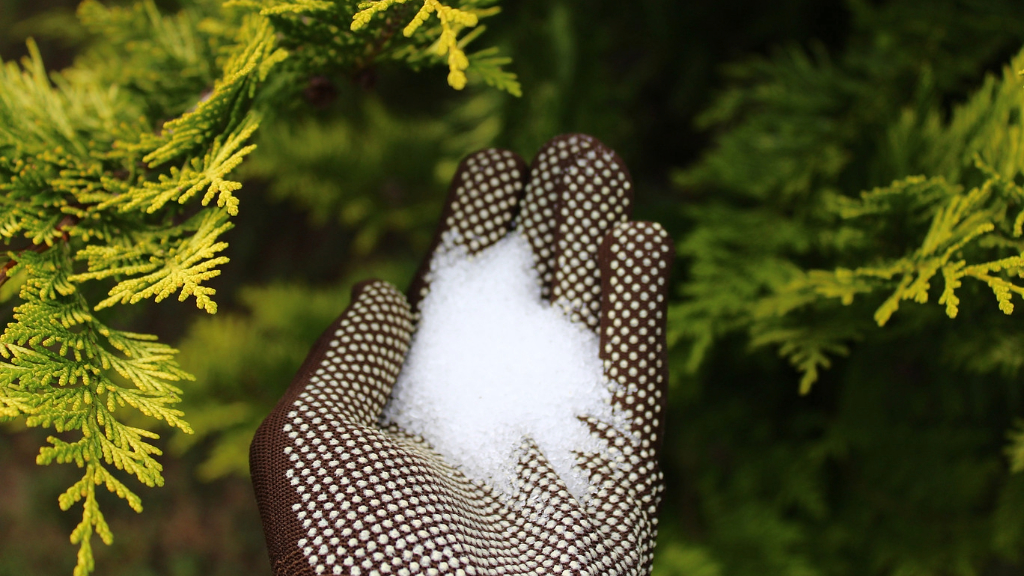Using Epsom Salt for Plants to Improve Their Growth

This week's guest blogger is Farhan Ahsan, a web enthusiast, passionate gardening writer and blogger at http://theselfsufficientliving.com.
The use of Epsom salt on plants is nothing new. Gardeners have known about the benefits of using Epsom salt fertilizer almost since the product was discovered at Epsom in Surrey, England centuries ago. Originally touted as a health product, using Epsom salt for tomato plants now runs a close second to the original use. The product is located in both the pharmacy and garden supply center because of its practical uses and versatility for both health conditions and garden uses. Using Epsom salt for gardening is an inexpensive and easy way to produce a bountiful crop of both vegetables and flowers with the use of natural fertilizers. The product increases plant productivity while decreasing unwanted plant disease that could threaten to ruin an entire crop, such as blossom end rot in a tomato crop. Read on to learn more about this amazing product and how to use it to improve plant growth.
What is Epsom Salt?
It looks like very coarse grains of salt, but it's not salt at all. A naturally occurring pure mineral compound of magnesium and sulfate which was discovered and named for a bitter spring in England several centuries ago. The bitter spring water was used for body soaks because of its claimed healing properties. As medical science advanced, tests confirmed Epsom salt was easily absorbed through the skin and did indeed provide a variety of health benefits.
Health Benefits
The magnesium in the Epsom salt relieves tired, achy muscles, reduces inflammation in the body, improves nerve function and helps prevent arteries from hardening. The sulfate also has its list of health benefits which include enabling the body to absorb nutrients more efficiently, flushing toxins from the body and relieving the pain of migraine headaches. A soak in a tub filled with warm water and a cup of Epsom salts reduces stress, relieves pain, constipation, muscle cramps, helps the body utilize insulin more effectively and a host of other health-benefiting things. With all the good the product can and does do for the body, it was just a matter of time before uses for Epsom salt in garden settings was experimented with and the results were outstanding.
Natural Fertilizers
Organic gardening is the way to go for most home gardeners and Epsom salt helps improve plant growth naturally. Epsom salt promotes deep root growth for plants so during times of drought or little rainfall, Epsom salt plants will have deep roots to seek out moisture and nutrients. Plants with deep roots thrive when other plants with shallow roots shrivel up and die if water is not constantly provide to them. Broadcast Epsom salt on top of the soil and work it in a couple of weeks prior to planting time so it will be in the soil and readily available for plants to absorb. Half-way through the growing season, side dress each vegetable plant or flower with a half cup of Epsom salt (be careful not to get any of the salt on the plant) to keep it growing strong for the remainder of the season. Larger plants and shrubs will also benefit from an application of this natural fertilizer. Apply one cup of Epsom salt around the drip line of the plant or shrub in spring to promote new and deep root growth.
Gardening tips, videos, info and more delivered right to your inbox!
Sign up for the Gardening Know How newsletter today and receive a free copy of our e-book "How to Grow Delicious Tomatoes".
Epsom Salt for Roses
Roses need magnesium and sulfate to stay healthy and produce larger blooms. Epsom salt meets this need for roses and enables them utilize primary plant nutrients (nitrogen, phosphorus and potassium) more effectively and the overall results are healthier rose bushes with more and larger bloom production.
Epsom Salt for Tomato Plants
In addition to enabling the plants to utilize primary nutrients more effectively, Epsom salt helps prevent a common disease from occurring in tomato plants known as blossom end rot. Blossom end rot occurs when the soil in which the tomato plant is growing is not providing the plant with enough magnesium. The bottom end of the green tomato where the bloom was develops a round rotten spot. The spot will enlarge and the tomato will be lost. Blossom end rot will continue to overtake every tomato on that vine and all produce from that vine will be lost unless magnesium is added to the soil. To stop blossom end rot and help the tomato plant recover quickly, remove all effected tomatoes from the vine. Next, mix one cup of Epsom salt in a gallon of warm water and slowly water the plant with the magnesium-rich water. The plant will instantly begin to absorb the magnesium and produce another batch of healthy tomatoes and develop new, deep roots. Using Epsom salt prior to planting and applying a side dressing of the magnesium-rich product will prevent blossom end rot from occurring.
Keep it Handy
Keep a box of Epsom salt for plants and health benefits handy at all times. The product has many uses and the cost is minimal.
-
 10 Common Composting Problems That Can Spoil Your Garden Gold – Plus Easy Fixes
10 Common Composting Problems That Can Spoil Your Garden Gold – Plus Easy FixesLearn how to troubleshoot common composting issues before they ruin your stash – from bad smells and bugs to materials not breaking down as they should.
By Susan Albert
-
 Terrifically Tubular Flowers For Hummingbirds: 9 Tube-Flowered Plants To Attract Hummers
Terrifically Tubular Flowers For Hummingbirds: 9 Tube-Flowered Plants To Attract HummersGrowing tubular flowers for hummingbirds helps you create the optimum feeding conditions for your winged friends. Here are nine tubed delights for hummers
By Tonya Barnett